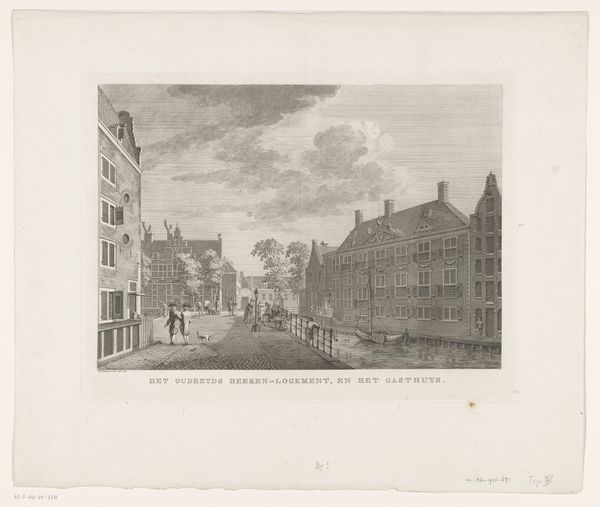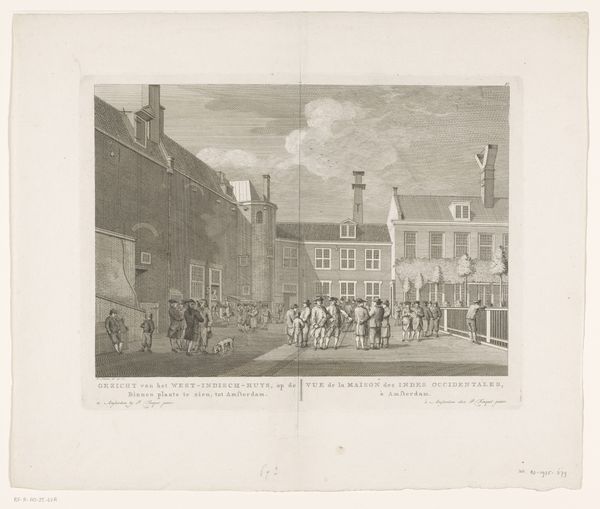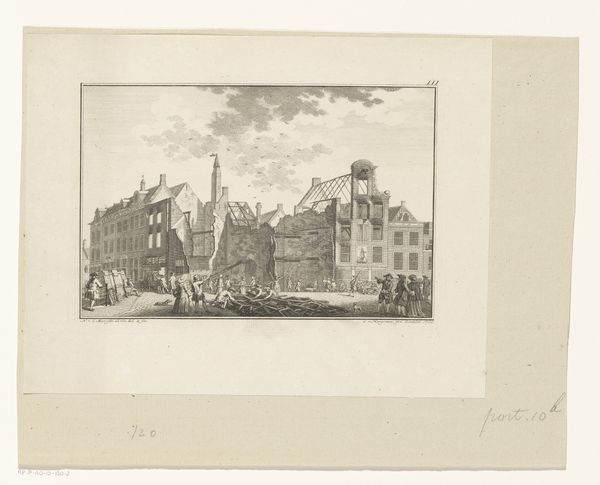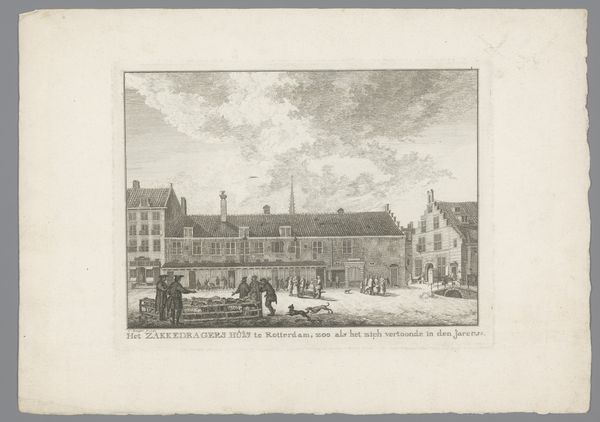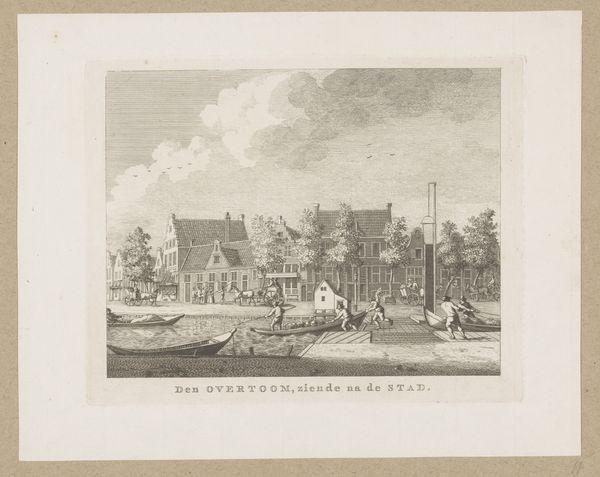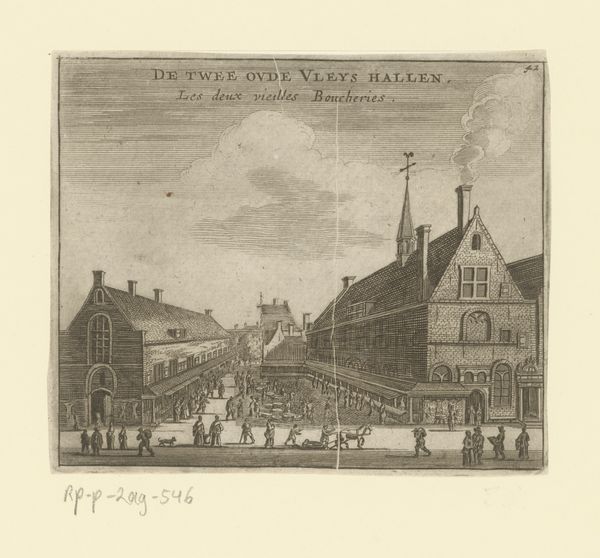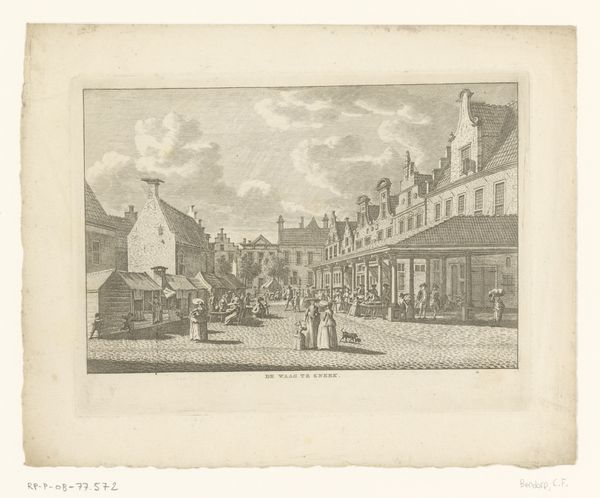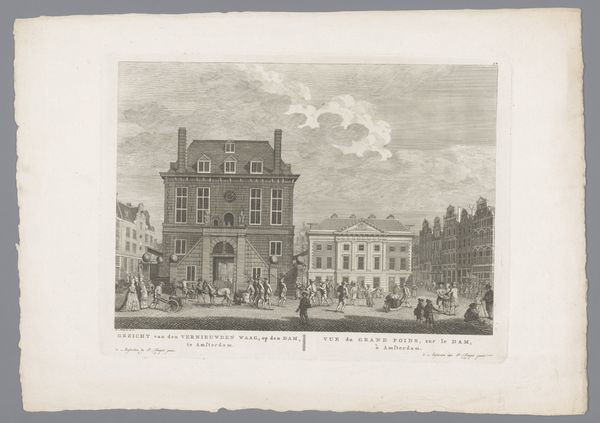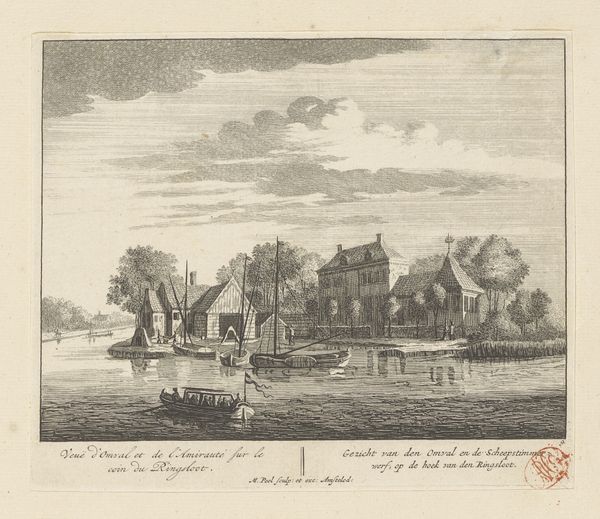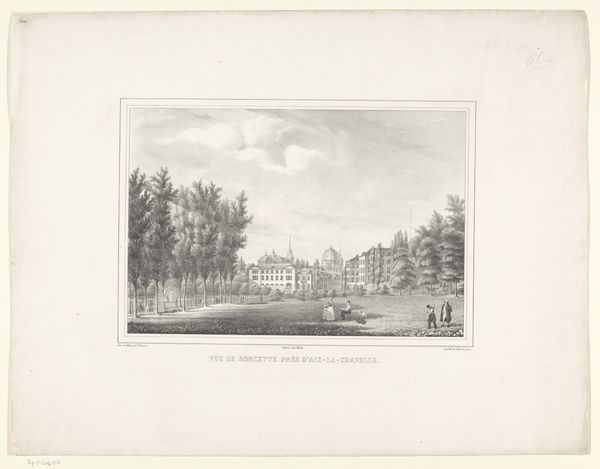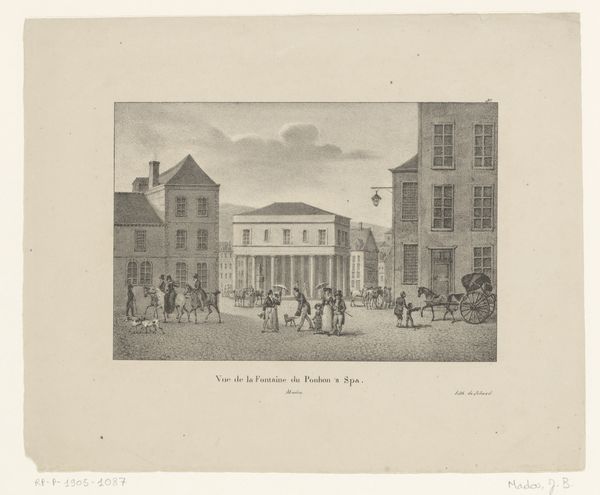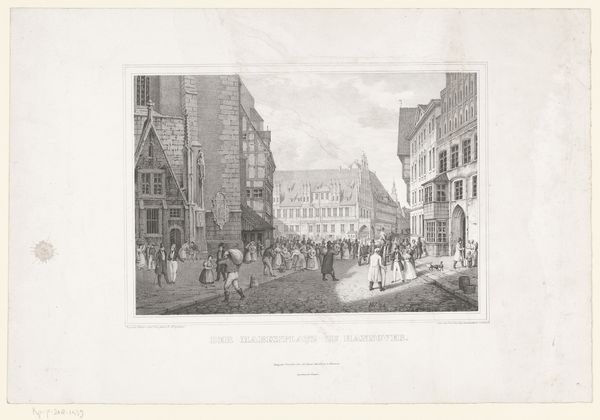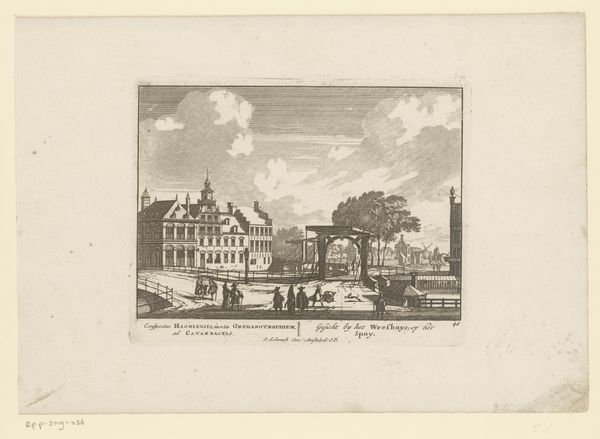
Dimensions: height 162 mm, width 266 mm
Copyright: Rijks Museum: Open Domain
Curator: The artwork we're viewing is a print entitled "Afgebrande gebouwen aan de Visbrug te Leiden, 1766," created by Johannes van Hiltrop. Editor: The immediate feeling is somber; despite the busyness of the people, the ruins create a palpable atmosphere of loss. The stark contrasts achievable through engraving highlight the charred remains effectively. Curator: Indeed. Van Hiltrop captured the aftermath of a devastating fire in Leiden using engraving, a meticulous process involving carving into a metal plate, inking it, and transferring the image onto paper. Consider the labor involved in replicating this scene for wider consumption; prints democratized access to visuals of significant events. Editor: Precisely. And note the composition—the artist places the ordinary citizens in the foreground, emphasizing their relationship to the disaster. They are witnesses, and their presence situates this devastation within the context of their everyday lives. The built environment's materiality shapes lives; its destruction transforms the city's social fabric. Curator: The detail achieved through engraving provides us insight into the buildings' construction and the fire's impact. Look closely—you can see how different materials fared against the flames, offering clues to the construction techniques of the time. It's a record not just of destruction, but also of architectural and material practices. Editor: And also consider, whose stories are missing? What impact did the fire have on marginalized communities? This image becomes a starting point for exploring themes of urban planning, social inequality, and resilience. Did this tragedy become a catalyst for social or infrastructural change? What stories were overlooked? Curator: Absolutely, and by closely examining the tangible marks and remnants within the work, and also investigating what stories remain untold or understated in the frame, we move past passive observation to consider the circumstances around art making, consumption, and also social experiences throughout history. Editor: Indeed. We begin with this image but use it as a jumping-off point to ask broader questions about societal structure. Curator: Seeing the intersection of artistry and tragedy opens dialogues about the power structures, and cultural contexts interwoven into the event that have echoed through history. Editor: And allows us to remember the community through the visible impacts on the local buildings and surrounding areas that the image depicts.
Comments
No comments
Be the first to comment and join the conversation on the ultimate creative platform.
